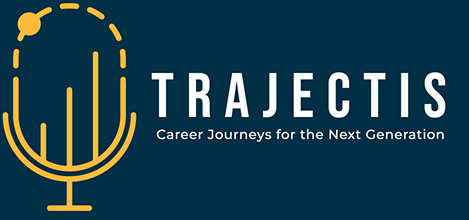What College Really Looks Like: My Schedule, Life, and Lessons So Far
Hello!
It’s been a minute since I last wrote a blog post—I took a brief pause while the Trajectis website was being finalized. A lot has happened since then. The school year has flown by, and I’m already halfway through my second semester of college!
While this is exciting, it’s also a little sobering—realizing just how quickly some of the best years of your life can pass.
Today, I want to share:
- My first and second semester schedules
- What my daily life looks like as a college student
- Some closing thoughts (including my take on the value of certain classes)
In upcoming blogs, I’ll dive deeper into specific course content—especially in classes that are critical for my major.
My First and Second Semester Schedules
In my first semester, I took 16 credit hours. That might sound like a lot, but I actually recommend it—especially in your first year. The classes tend to be less demanding, and juggling five or six at once is very doable. As a first-year student in the Poole College of Management, my classes included:
- ACC 210: Financial Accounting
- HI 207: Ancient Mediterranean History
- MA 114: Introduction to Finite Math
- MIE 201: Introduction to Business Processes
- M100: Personal and Professional Identity
- PSY 200: Introduction to Psychology
Currently, in my second semester, I’m enrolled in:
- ACC 220: Introduction to Managerial Accounting
- BUS 225: Personal Finance
- EC 201: Principles of Microeconomics
- MEA 130: Intro to Weather and Climate
- ST 350: Economics and Business Statistics
This mix of general education and major requirement classes keeps things balanced. If you’re majoring in finance or business, I highly recommend combining gen-eds with core major courses. The major-related classes are usually more engaging, though they do tend to be more challenging.
My Daily Life in College
I thrive on routine and structure, so I try to stack my classes together—getting them done in one long block of time.
- Monday & Wednesday: Accounting, Weather and Climate, and Microeconomics from 8:30 AM to 1:00 PM
- Tuesday and Thursday: Personal Finance and Statistics from 1:30 PM to 4:15 PM
This setup gives me plenty of free time each day, which I use to pursue other passions.
For instance, I’ve been day trading for the past 6–7 months and plan to continue until I start turning a profit. I’m also a dedicated gym-goer and make it a point to squeeze in workouts whenever I can.
Beyond that, I’m actively involved in campus organizations like the Finance Club and the Internal Student Audit Club.
Freshman year is the best time to explore—you’ll never have more free time. Try different activities, clubs, and organizations to discover what you’re truly passionate about.
Closing Thoughts
One key piece of advice: be consistent with your work outside of class. It’s tempting to procrastinate when it feels like you have all the time in the world—but that time disappears fast. Instead, commit to working a few hours each day—either after class or in the evening. You’ll feel more accomplished and less stressed.
Also, real talk: I don’t take my general education classes very seriously. In my opinion, they often don’t contribute much to your career goals and can hurt the overall ROI of college. Focus your energy on the classes that actually matter for your major and long-term goals.
Start Your Journey
Explore Practical Advice for Your Career Path
Subscribe to our newsletter and join a community of future leaders who are actively shaping their career trajectories. Because your career path shouldn’t be left to chance – let’s navigate it together.
Related Posts

Author: Seth
Date: Feb 12, 2025
As tuition fees continue to rise, many students and parents are questioning the value of a college education.
Category: Seth Blogs

Author: Seth
Date: Feb 12, 2025
Establishing good credit early can set the foundation for future financial health.
Category: Silas Blogs






